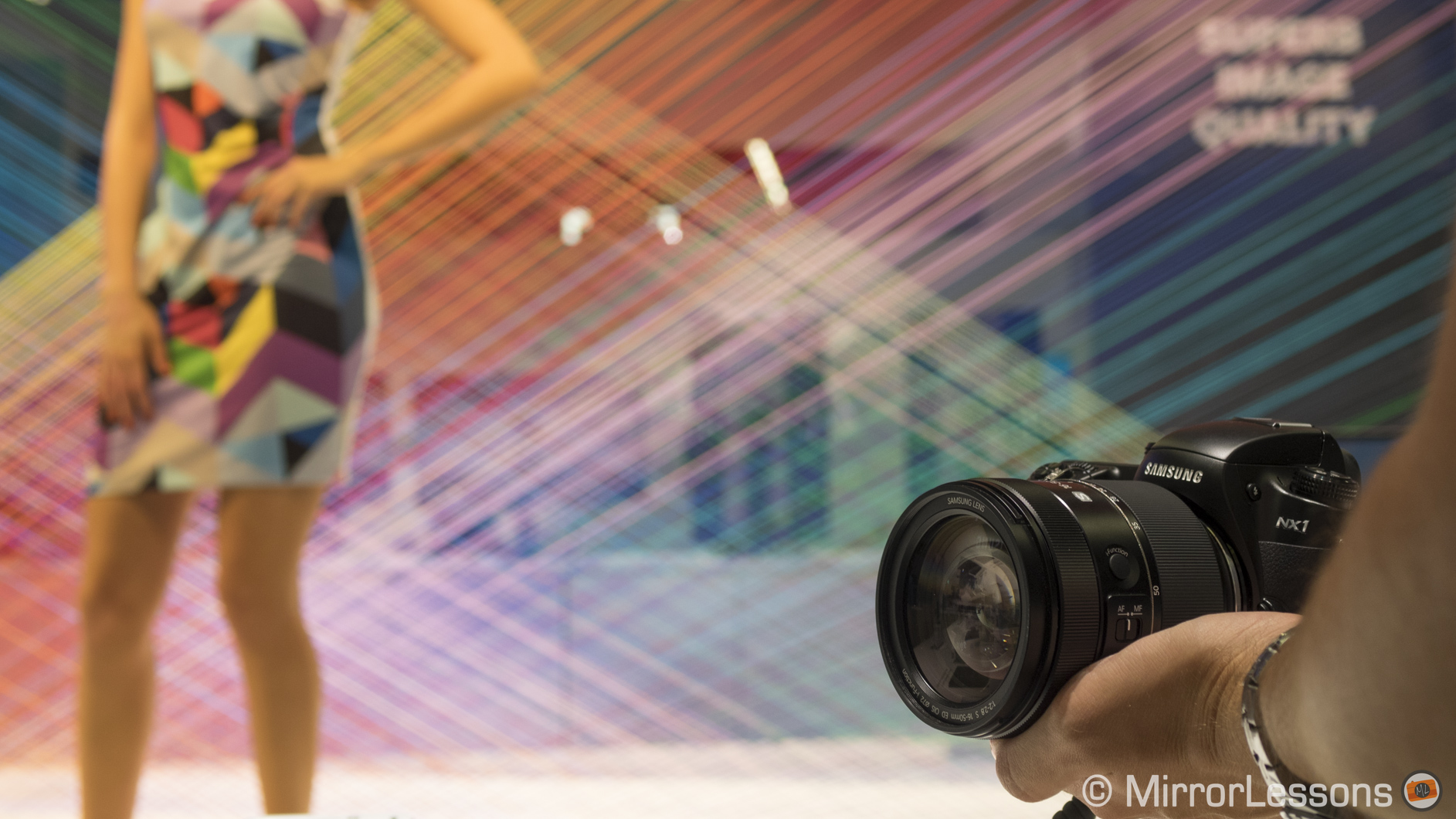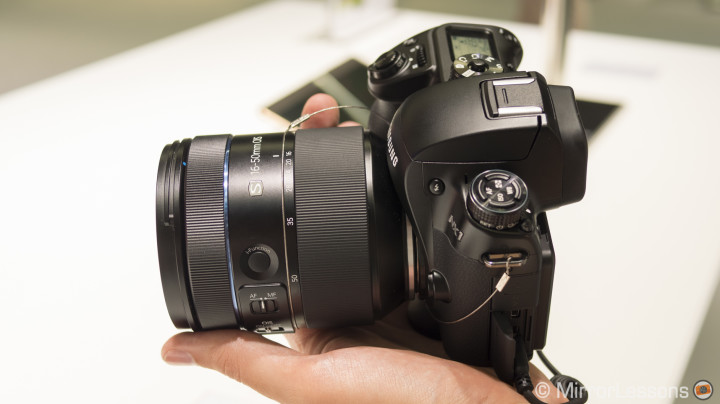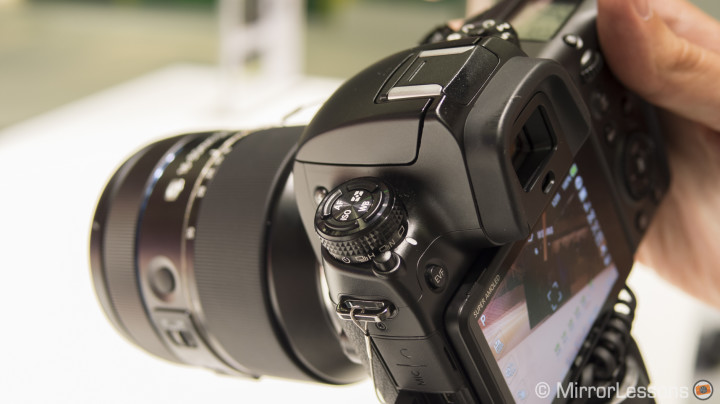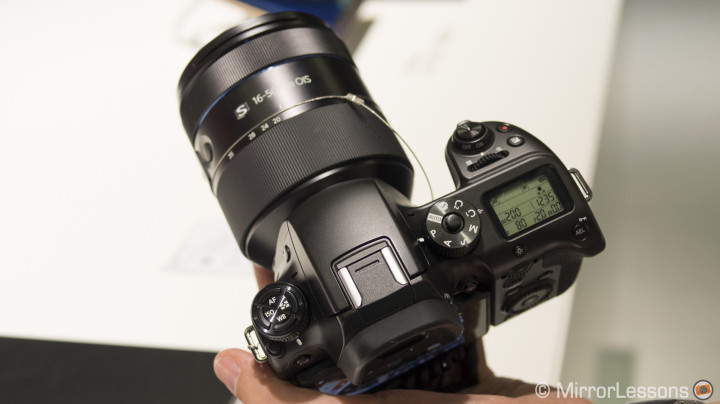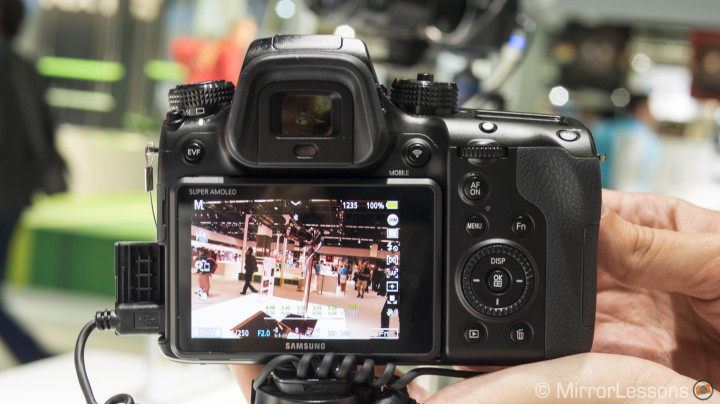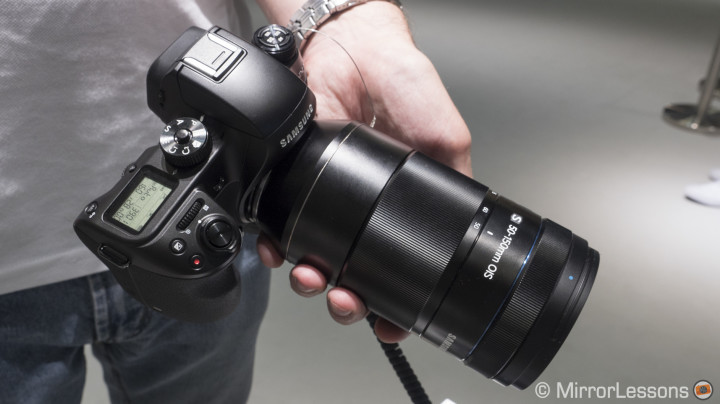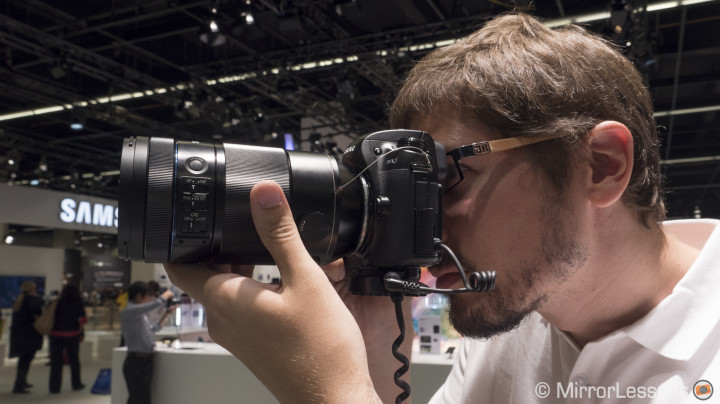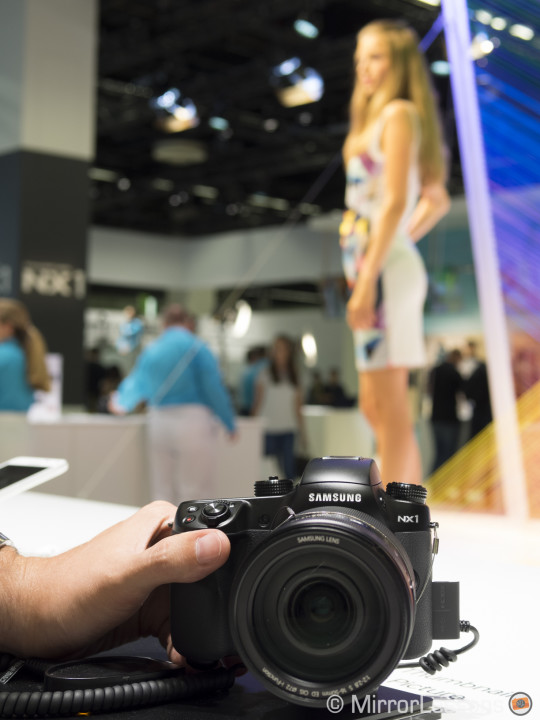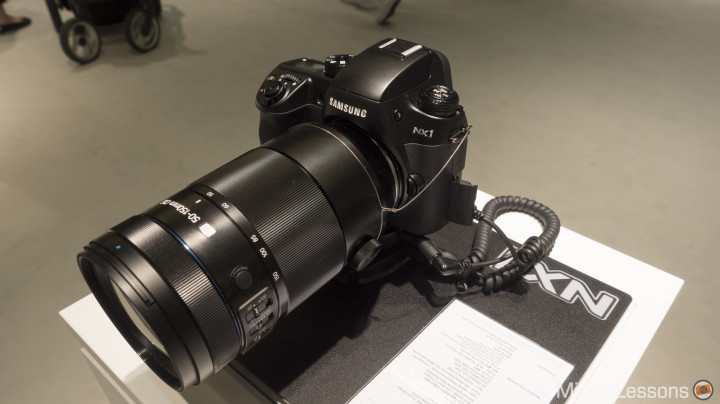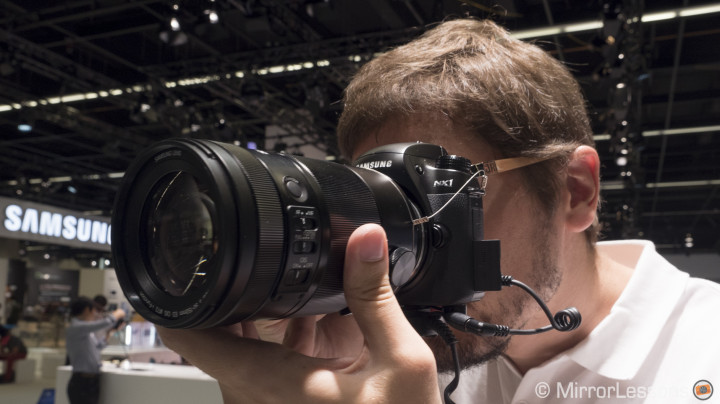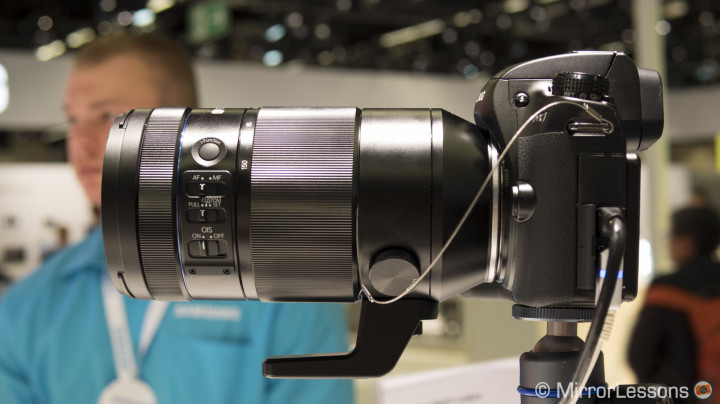The Samsung NX1 is certainly one of the most exciting camera announcements at Photokina this year. Samsung seems to have put the most advanced technology they possibly could in their flagship APS-C mirrorless model. We had a hands-on session at the Samsung booth but unfortunately, despite the presence of lots of samples in the area, they were all pre-production models and the SD card was actually sealed to make sure no one could insert his or her own card. But we were still able to try some other interesting features.
DSLR without a mirror
The first thing you notice when you hold the camera for the first time is that it feels like a DSLR especially regarding its size. It also feels like a DSLR when the 16-55mm f/2-2.8 lens, which is a very fat, is attached. The actual weight of the body alone is 550g (without the battery) which is pretty much identical to the Panasonic GH4.
The NX1 also feels like a DSLR in terms of the grip and build quality, the dials and every part of its design, which is actually a very positive aspect. I have to praise Samsung for this–they really designed a camera that feels solid.
Every button and dial is solid and easy to access and use. One of the unique characteristics of this camera is the top LCD panel like the one you can find on most high-end DSLRs. It is certainly a key aspect that makes us understand the way in which Samsung engineers were inspired to design the camera.
The NX1 is very responsive and reactive for every command you give. The LCD touch screen is among the best I’ve seen in terms of colour, resolution and brightness. The EVF is another very positive feature of this camera. The Fuji X-T1 and its EVF might have found a valid rival in this regard.
While the 16-50mm makes the combo tend toward a DSLR feel, the recently announced 50-150mm f/2.8 is a good compromise between size and performance. It is still is the biggest and heaviest of all the f/2.8 telephoto lenses for CSCs we’ve seen at Photokina.
Autofocus and performance
Since the NX1 samples available at Photokina didn’t have the final firmware, please take the following lines with a grain of salt. (I actually observed physical proof that it didn’t have the final firmware–on one particular sample, the viewfinder’s colours completely shifted the skin tones to purple and I had to remove the battery to fix it.)
That being said, I tried the autofocus with both the 16-50mm and 50-150mm and the reaction and accuracy seems quite good. The only negative side that I experienced was that sometimes the lens starting to hunt back and forth without any particular reason in attempt to lock the focus. But after a few seconds the AF started to behave correctly again, which leads me think that it is related to the non-finalise firmware.
Where the autofocus impressed me was with video. As you might already know, the sensor includes 205 phase detection points and the camera can shoot 4k video with a new H265 codec. I did try to record a few minutes to see how the AF responded and it was surprisingly quick and reactive. It could be the best AF response I have seen in a camera during video recording.
The second impressive feature of the camera is the continuos shooting speed. Not knowing which SD card the camera had inside, I cannot really talk about buffer capabilities but here is what I tested. In JPG mode Fine, I was able to take 168 pictures during my first attempt with the 16-50mm and 101 pictures with the 50-150mm during my second test. Its capabilities at 15fps seem quite spectacular. When I enabled RAW+JPG, the performance decreased a lot especially concerning the buffer, which makes me think that the RAW files are taking a lot of space also because it is a 28mp sensor and RAW can be recorded in 14 bit compression. Below you can see our hands-on video which also shows the burst capabilities of the camera.
The NX1 also has a new SAS (Samsung Auto Shot) feature that is able to predict the exact moment to take a shot during an action sequence. You can actually select different types of actions like baseball or jump. I briefly tried that as well by asking Heather to simulate both actions. With the baseball mode it didn’t work (perhaps because she was only simulating the movement without a bat), while with the Jump mode it recognised the movement almost immediately.
The new 50-150mm f/2.8 also seems like a very nice lens regarding performance and image quality. The autofocus motor is very quiet and focuses fast with the camera. The stabilisation also seems to give good results.
Conclusion
The Samsung NX1 has the potential of becoming the most powerful mirrorless camera on the market. Speed is there, autofocus is promising but needs to be tested with a final firmware. And of course lots of questions need to be addressed regarding the image quality of this camera, which must be spectacular to be on par with all the other impressive features the NX1 possesses.
At this point there are two big questions that I think need answering: the first is related to the size of the camera. Samsung clearly designed the camera with a DSLR in mind and while there is nothing wrong with it, it goes in the opposite direction to many other mirrorless competitors. This is important because one of the most interesting aspects that attracts photographers to CSCs is the light weight and compactness. This point links to my second question, which is Samsung’s status as a massive corporation with products that range from washing machine to tablets, TVs and of course cameras. Can the company stand out as a photography brand with the NX1? Certainly, it is a very interesting challenge, and we are glad to see Samsung addressing the pro market with this kind of camera.
